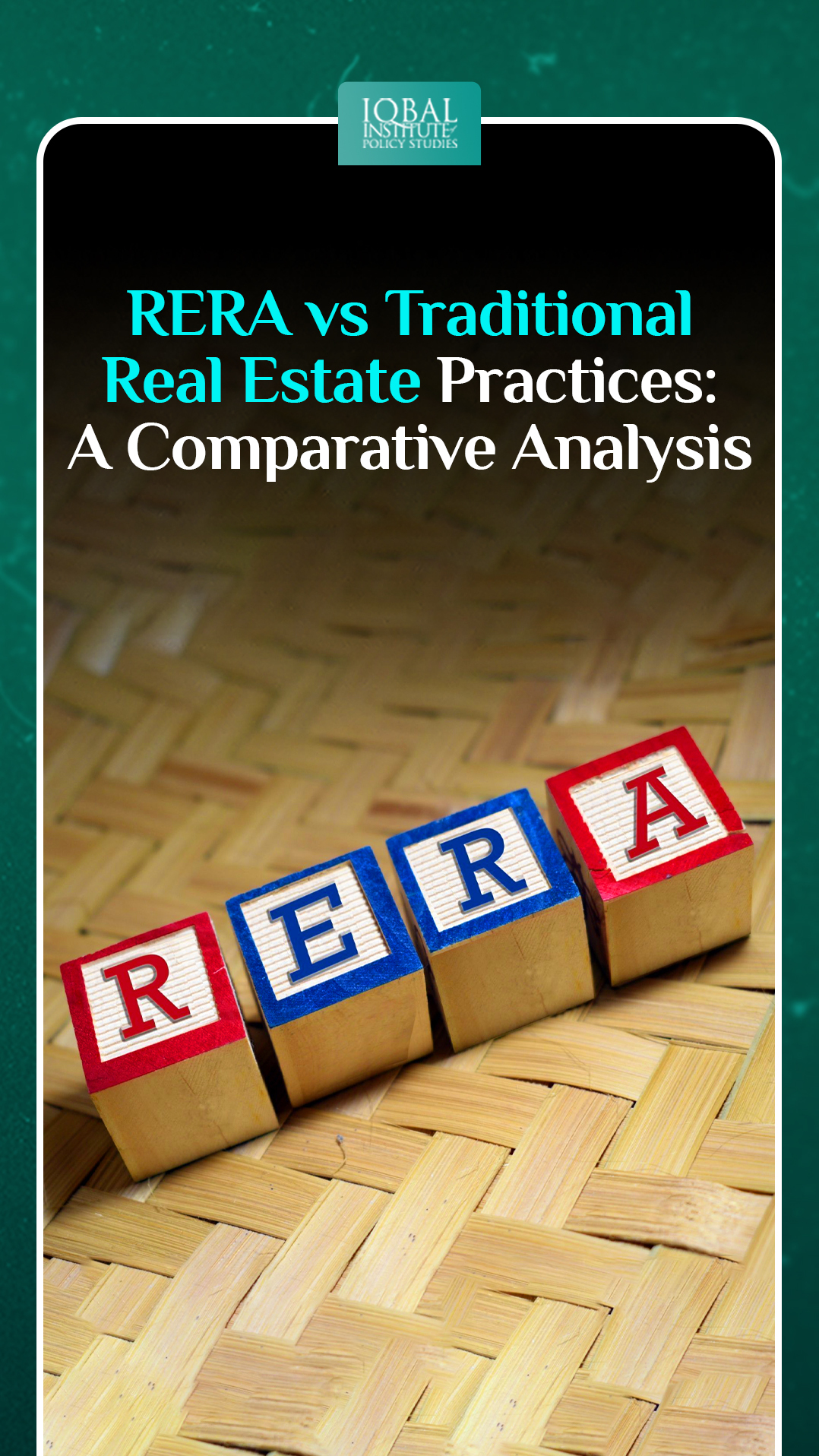The real estate sector has long been regarded as one of the most lucrative and sought-after industries worldwide. In many countries, including India, it plays a pivotal role in economic growth and development. However, the real estate industry has often been marred by issues of transparency, accountability, and consumer protection. To address these concerns, various countries have introduced regulatory reforms, with the Real Estate (Regulation and Development) Act, commonly known as RERA, being a significant milestone in India. In this blog, we will delve into a comparative analysis of RERA versus traditional real estate practices, exploring the implications and benefits of this game-changing legislation.
Understanding RERA
The Real Estate (Regulation and Development) Act was first enacted in India in 2016 with the primary objective of protecting the interests of homebuyers, promoting transparency, and ensuring accountability in the real estate sector. RERA introduced a framework that mandates developers to register their projects, adhere to strict timelines, and maintain a high level of transparency in their dealings. It also establishes regulatory bodies at the state level to monitor and resolve disputes swiftly.
Traditional Real Estate Practices
Before the advent of RERA, the real estate sector operated under traditional practices characterized by opaqueness and a lack of standardized procedures. Some of the key issues associated with traditional practices included:
Lack of Transparency
Buyers often had limited access to information about the project, the builder’s track record, and the status of approvals, leading to potential risks and uncertainty.
Delayed Deliveries
Project delays were a common problem, leaving buyers in limbo and causing financial strain due to home loan interests and rental expenses.
Unfair Practices
Developers could employ unfair practices like changing project specifications after receiving bookings, imposing hidden charges, and exploiting buyers’ vulnerabilities.
Litigation and Disputes
Disputes between buyers and builders were frequent, leading to protracted legal battles that were both time-consuming and expensive.
Comparative Analysis: RERA vs. Traditional Practices
Transparency and Accountability
RERA: Under RERA, developers are required to register their projects with the regulatory authority, providing detailed information about the project, including approvals, financial details, and timelines. This information is made available to the public, ensuring transparency. Builders are held accountable for adhering to the promised specifications and project timelines.
Traditional Practices: In the absence of regulation, developers had the discretion to share or withhold information, leading to opacity in transactions. Accountability mechanisms were limited, making it challenging for buyers to hold developers accountable for delays or changes in project plans.
Timely Project Completion
RERA: RERA mandates developers to adhere to project timelines and imposes penalties for delays. This has incentivized builders to complete projects on time, reducing the financial burden on buyers and the risk of project abandonment.
Traditional Practices: Delays were commonplace in traditional real estate practices, causing financial stress to homebuyers. The absence of a regulatory framework made it difficult for buyers to seek compensation for these delays.
Buyer Protection
RERA: RERA provides a comprehensive framework for buyer protection, including the establishment of regulatory authorities and the requirement for builders to deposit a percentage of project funds in an escrow account. This ensures that the funds are not diverted to other projects and are available for the specific project’s completion.
Traditional Practices: Buyers in traditional practices had limited legal recourse and often had to rely on lengthy and expensive legal battles to seek compensation for issues like project delays or changes in project plans.
Dispute Resolution
RERA: RERA established Real Estate Regulatory Authorities (RERAs) at the state level with the mandate to adjudicate disputes between buyers and builders. This streamlined and expedited the resolution process.
Traditional Practices: Dispute resolution in traditional practices often involved protracted legal battles, causing stress, time delays, and increased costs for both parties.
Financial Transparency:
RERA: Developers are required to maintain a separate escrow account for each project, ensuring that funds collected for a particular project are used only for that project’s development. This minimizes the risk of diversion of funds.
Traditional Practices: In traditional practices, the lack of financial transparency meant that funds collected for one project could be diverted to other projects or non-real estate ventures, jeopardizing the completion of the purchased property.
Builder Track Record
RERA
RERA mandates builders to provide details of their track record and past projects, helping buyers make informed decisions based on the builder’s credibility.
Traditional Practices: In traditional practices, information about the builder’s track record was often anecdotal and hard to verify.
Conclusion
In the comparative analysis of RERA vs. traditional real estate practices, it becomes evident that RERA has ushered in a new era of transparency, accountability, and buyer protection in the real estate sector. It has addressed many of the longstanding issues that plagued the industry, making it more consumer-friendly.
However, it is important to note that while RERA has significantly improved the real estate landscape, challenges and implementation issues persist. It is crucial for both buyers and developers to be aware of their rights and responsibilities under RERA to fully harness its benefits.
In the long run, RERA has the potential to instill confidence in the real estate market, attract more investment, and provide a level playing field for all stakeholders. As the real estate sector continues to evolve, the effective implementation of RERA can serve as a model for other countries looking to reform their real estate practices and protect the interests of homebuyers.
This article is written by Radma Nouman. Radma is a research analyst at the Iqbal Institute of Policy Studies (IIPS).



Leave a Reply